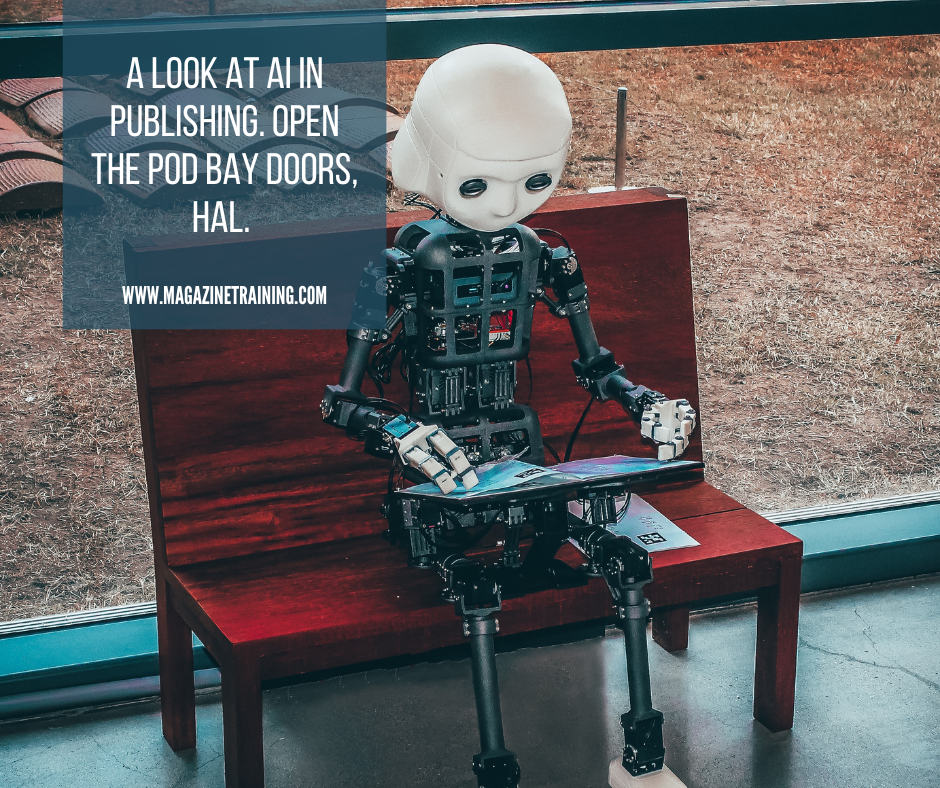
Stephen Hawking warned the world in 2014 that Artificial Intelligence (AI) could be the end of mankind, such was the great man’s deep concern about machines surpassing humans. Movies like “2001: A Space Odyssey” (1968) – in which the iconic phrase “Open the pod bay doors, Hal” was first delivered – and Blade Runner (1982) had opened a pang of anxiety in our minds. So, when IBM’s Deep Blue computer defeated Garry Kasparov, the best chess player in the world in 1996, we were reminded that we should be worried.
The term “Artificial Intelligence” has been around for quite some time, having been first coined in 1956 at Stanford University by computer scientist, John McCarty. In late 2022, however, we got the latest AI jolt from the amazing antics of the internet chatbot – ChatGPT. The app from OpenAI in San Francisco allows users to create (among other things) high-quality text from only basic prompts. It is currently free, so that OpenAI can gather feedback and recommendations from the audience. And judging by the frustrating backup of people trying to get into the app every day, this is a large and enthusiastic audience.
On the face of it, this appears to be a game changer. If you are used to reading articles about AI, you will be aware that they have all hitherto assured us that AI will never replace human writers and the creative writing process. Well, it appears that “never” is here.
How does AI impact the typical medium-sized publisher?
Human-To-Machine (H2M) communications engineers talk about an “H2M” scale of 0 to 4, where level 0 is all-human activity and level 4 is all-Machine. Levels 1 through 3 are intermediate steps, and most current AI solutions are at Level 1, so we are clearly at the beginning of an exciting journey.
In this article, we take a look at whether AI is going to change any lives or put us all out of work. Being focused on publishing, we investigate what impact AI has on consumers and on the typical medium-sized publisher, and how they can put all this smart technology to work.
As consumers, we all see AI in use every day although we may not even recognize it as such. Any time we see a “recommendation” from a company such as Amazon, or Netflix or Spotify, we are seeing AI in action, based on the data they have gathered on our own preferences and behaviors. Simple AI apps are commonplace. To give the reader an idea of how commonplace, see the end of this article, for a sample list of publishing apps from a brief internet search. Many have the top-level domain name “.ai.”
Human vs. Computer generated writing
Even though ChatGPT and tools like it offer some striking prose, most of us would still say that the difference with human writing is that humans can put together unmatchable written structures. What makes our creations valuable is how humans connect nouns and adjectives and paragraphs in new and unusual combinations. Each combination is totally new. We like to say we have “feelings” whereas machines are just logical and rational – they can only use what they have been fed (both good and bad). You would think that to reproduce all the vagaries of skilled writers’ minds, the machine training system must learn so much material that it is beyond even the most capable computer systems that we have today. Well, we are not there yet but it is likely that we will get there. It is only a question of time.
Uses of AI in Publishing Today
Some of the early publishing applications automatically edited (and translated) incoming manuscripts. Today, the use of AI has spread to most of the functions of the commercial publisher: in marketing, customer service, finance, editorial and production processes.
Marketing is now possibly the biggest single user of AI in publishing. They often use AI to analyze reader preferences and behaviors for audience building, resulting in automated personalized marketing (via email and social media). It saves a lot of time and is proven to be much more effective than a one-size-fits-all approach to building community with readers. Text auto-tagging and SEO (Search Engine Optimization) techniques can easily create the right hashtags to enhance the probability of discovery by consumers and advertisers. They are the building blocks of a good digital marketing strategy.
Continue reading
by knk
Photo by Andrea De Santis on Unsplash
Related posts
Magazine Training International’s mission is to encourage, strengthen, and provide training and resources to Christian magazine publishers as they seek to build the church and reach their societies for Christ.

